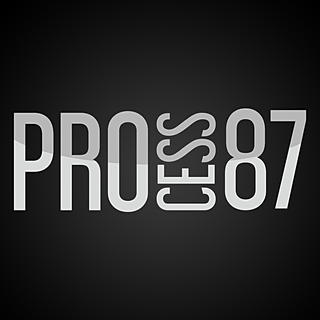Estimating Photography Projects: How to Get the Right Quote for Your Brand
- Mateusz Szopa
- Oct 12, 2024
- 4 min read

When it comes to photography, every project is unique. The complexity, time investment, and scope can vary dramatically from one shoot to the next. As a photographer, I’ve seen firsthand how critical it is to create custom estimates tailored to each client's specific needs. Whether you’re a brand manager launching a new campaign or a small business owner looking to showcase products, getting the right quote requires clear communication and understanding.
In this blog post, I’ll guide you through how I estimate projects and the best ways for clients to communicate their photography needs. This will ensure you get an accurate estimate and help the project run smoothly from the start.
Why Custom Estimates Are Necessary
Photography is not a one-size-fits-all service. Every brand has different needs, and various factors influence the overall cost. Some shoots require minimal equipment and setup, while others demand specialized lighting, models, or travel to specific locations. Here are a few key reasons why custom estimates are necessary:
Scope of Work: The size and complexity of the project, such as the number of shots or products needed, can significantly impact the cost.
Shoot Duration: A quick one-hour shoot is priced differently than a multi-day campaign.
Pre-production Work: Does the shoot require props, mood boards, location scouting, or models? Pre-production work adds to the timeline and budget.
Post-Production Time: Editing, retouching, color correction, and delivering the final product can vary in complexity, impacting the overall cost.
Licensing and Usage Rights: How the images will be used (e.g., social media, billboards, print ads) also plays a role in pricing.
Key Information I Need for Accurate Estimates
To provide a detailed and accurate quote, I need clear communication from brand managers or clients. Below are the critical elements I look for when estimating a photography project:
The Purpose of the Shoot
Will the images be used for social media, a website, advertisements, or a full-scale campaign? Understanding the purpose helps me gauge the level of creative direction and effort required.
Number of Images/Final Deliverables
How many final images do you need? A few high-quality product shots may require less time than a full catalog shoot of multiple angles and variations.
Locations
Are we shooting in a studio, at your location, or in a specific setting? Outdoor and on-location shoots can require travel, permits, and weather considerations.
Style and Mood
Is there a specific style or mood you’re aiming for? Share references, mood boards, or even rough ideas that can give me a sense of the creative direction. This helps ensure I capture the exact look and feel your brand needs.
Timeline
When do you need the photos? Rush projects or campaigns with tight deadlines can influence pricing.
Post-Production Requirements
Do you need retouching, background removal, or special effects in post-production? The level of editing required impacts both time and cost.
Budget
Sharing your budget range upfront helps me tailor the project scope to your needs and avoid miscommunication.
Types of Estimates for Photography Projects
There are different ways to structure estimates depending on the complexity of the job. Here are a few options to consider:
1. Hourly Rates
For smaller or quick-turnaround projects, an hourly rate works best. This option is typically used for:
Portraits
Simple product photography
Corporate headshots
With this option, the client pays based on the actual hours spent shooting and editing. It’s straightforward and flexible for one-off tasks.
2. Day Rates
A day rate is ideal for full-day projects, where the scope includes more planning, setup, and production. This is common for:
Full branding shoots
Lifestyle or social media campaigns
On-location projects with multiple subjects
A flat day rate covers all the work done within the specified day, ensuring you get quality coverage without watching the clock.
3. Project-Based Estimates
For larger, more complex shoots, I recommend project-based estimates. These are custom quotes based on the complete scope of work, including pre-production, the shoot itself, and post-production. This is perfect for:
Product line launches
Multi-day shoots
Commercials or ads involving multiple moving parts (locations, models, props)
With a project-based approach, you’ll receive a comprehensive breakdown of costs, making it easier to plan your budget.
Communicating Your Needs: Tips for Clients and Brand Managers
Effective communication is the key to getting the most accurate estimate and ensuring a successful shoot. Here are some tips for making sure both sides are on the same page:
Be Specific: The more details you can provide upfront, the better. It’s important to discuss the number of images, locations, creative direction, and timeline clearly.
Use Visuals: Sharing visual references such as mood boards or past campaigns helps me understand your vision more quickly and accurately.
Discuss the Budget Early: It’s helpful to share your budget expectations so I can create a quote that fits within your financial plan. This prevents any misunderstandings later in the process.
Plan Ahead: Booking shoots with plenty of lead time allows us to plan thoroughly, avoiding the need for rush fees or last-minute stress.
Final Thoughts
Estimating photography projects requires thoughtful consideration of every detail to ensure the shoot is executed smoothly and delivers the desired results. Custom estimates are essential for commercial photography because each brand and project is unique. By clearly communicating your vision, needs, and budget, brand managers and clients can help ensure the photography process runs smoothly, delivering high-quality visuals that elevate your brand.
Whether you’re just starting out or launching a large-scale campaign, the key to success is collaboration. I’m here to help guide you through the process, creating visuals that connect with your audience and tell your brand’s story in the best possible light.
Let’s work together to bring your vision to life!




Comments